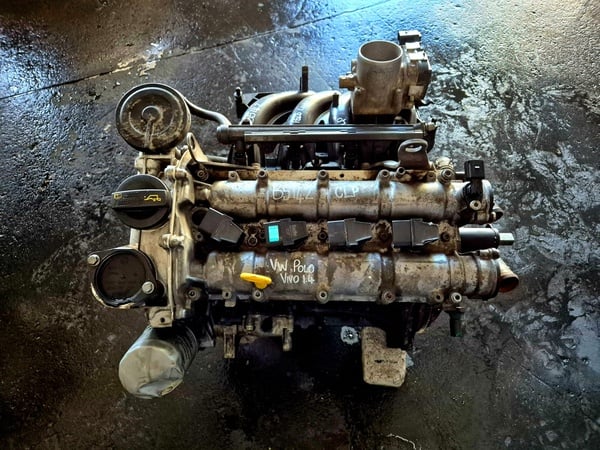Extend the lifespan of your clp engine with regular care.
Just How a Clp Engine Can Enhance Effectiveness in Various Industries
The advent of CLP engines notes a significant change in operational effectiveness throughout different fields, driven by their capacity to maximize fuel intake and decrease downtime. Industries such as manufacturing and logistics stand to gain significantly from their durable style and consistent power outcome, which assure to improve procedures and boost efficiency. As companies progressively focus on sustainability together with effectiveness, the duty of CLP engines becomes also more important. What remains to be seen is how these developments will shape the future landscape of industrial procedures and their influence on more comprehensive financial trends (clp engine).
Review of CLP Engines
CLP engines, or Continual Fluid Propellant engines, represent a significant development in propulsion technology, specifically for area applications. These engines use a constant feed system that enables the sustained expulsion of propellant, leading to boosted effectiveness and performance contrasted to standard solid or hybrid propulsion systems. By maintaining a continuous flow of fluid propellant, CLP engines can accomplish more specific thrust control, which is essential for steering spacecraft in different mission scenarios.
The layout of CLP engines integrates advanced products and innovative gas management systems. clp engine. This causes decreased weight and increased integrity, crucial aspects for long-duration space objectives. The continuous procedure minimizes the danger of burning instability, a typical obstacle in conventional rocket engines.

Benefits in Manufacturing
The production of Continual Fluid Propellant (CLP) engines presents a number of remarkable advantages that enhance both performance and cost-effectiveness. One of the primary advantages is the streamlined production procedure, which reduces the intricacy connected with typical propulsion systems. By using fluid propellant, manufacturers can accomplish greater precision in engine efficiency, bring about enhanced energy output and minimized waste.
Furthermore, CLP engines help with a higher degree of modularity, permitting for less complicated integration into various production lines. This flexibility can significantly lower preparations and improve general functional flexibility. Making use of CLP innovation likewise tends to minimize the demand for comprehensive maintenance because of fewer relocating parts, which equates into minimized downtime and functional costs.

Applications in Logistics
Leveraging Constant Liquid Propellant (CLP) engines in logistics provides considerable advantages in operational efficiency and reliability. These engines offer a robust service for various transportation demands, making it possible for the smooth activity of items throughout large distances. The fundamental design of CLP engines allows for consistent power result, which equates into smoother and more predictable transport routines.
One of the essential applications of look here CLP engines in logistics is in sturdy products transport, where they can drive both ground and aerial lorries. Their capability to preserve high performance under varying lots problems makes sure that delivery timelines are met, therefore improving consumer satisfaction. In addition, CLP engines can be incorporated right into automated logistics systems, promoting real-time monitoring and optimizing course planning.
Moreover, the sturdiness of CLP engines reduces maintenance downtime, permitting logistics business to optimize their operational capabilities. This is especially advantageous in warehousing procedures, where effectiveness in handling and moving items is vital. As logistics remains to develop, the integration of CLP engines stands for a forward-thinking technique that not just boosts efficiency yet additionally supports the sector's growing needs for reliability and rate.
Influence On Power Efficiency
Exactly How do Continual Fluid Propellant (CLP) engines boost energy performance in transport? CLP engines utilize a regular flow of liquid gas, maximizing combustion processes and maintaining a steady drive output. This design lessens YOURURL.com power losses connected with standard burning engines, where fuel shipment can differ and cause ineffectiveness.
The continual procedure of CLP engines enables a more effective thermal cycle, causing greater specific impulse compared to traditional engines. clp engine. This equates to decreased gas intake for the same amount of work done, substantially decreasing functional prices throughout various transportation industries, including air travel and maritime markets
Additionally, the capability of CLP engines to keep optimum efficiency under differing tons problems minimizes the demand for regular acceleration and deceleration, further enhancing fuel efficiency. Improved energy efficiency not just adds to set you back financial savings however additionally brings about decrease greenhouse gas exhausts, straightening with worldwide sustainability goals.
Future Trends and Innovations
Emerging developments in Continuous Fluid Propellant (CLP) engine innovation guarantee to transform the landscape of transportation efficiency and sustainability. As sectors pivot towards greener options, CLP engines stand at the forefront, incorporating cutting-edge materials and design methodologies that enhance performance while decreasing ecological effect.
One of one of the most appealing trends is the fostering of hybrid systems that combine CLP engines with renewable resource resources. This synergy can maximize fuel consumption and decrease exhausts, straightening with global sustainability goals. Developments in computational liquid dynamics (CFD) are assisting in the layout of more aerodynamically reliable engines, leading to minimized drag and improved gas performance.
Moreover, the advancement of wise monitoring systems is readied to improve functional efficiencies. These systems take advantage of information analytics and IoT technology to maximize engine performance in real-time, ensuring that the engines run within their most efficient specifications.
As study remains to check out alternative propellant formulations-- such as biofuels and synthetic check this site out gas-- the future of CLP engines looks appealing. By using these innovations, sectors can not only improve their efficiency however likewise contribute significantly to a cleaner, much more lasting future in transportation.
Conclusion
In final thought, CLP engines represent a considerable improvement in effectiveness throughout numerous industries. The assimilation of advanced products and fewer moving components minimizes upkeep requirements, while alignment with sustainability goals settings CLP engines as an essential innovation for the future.